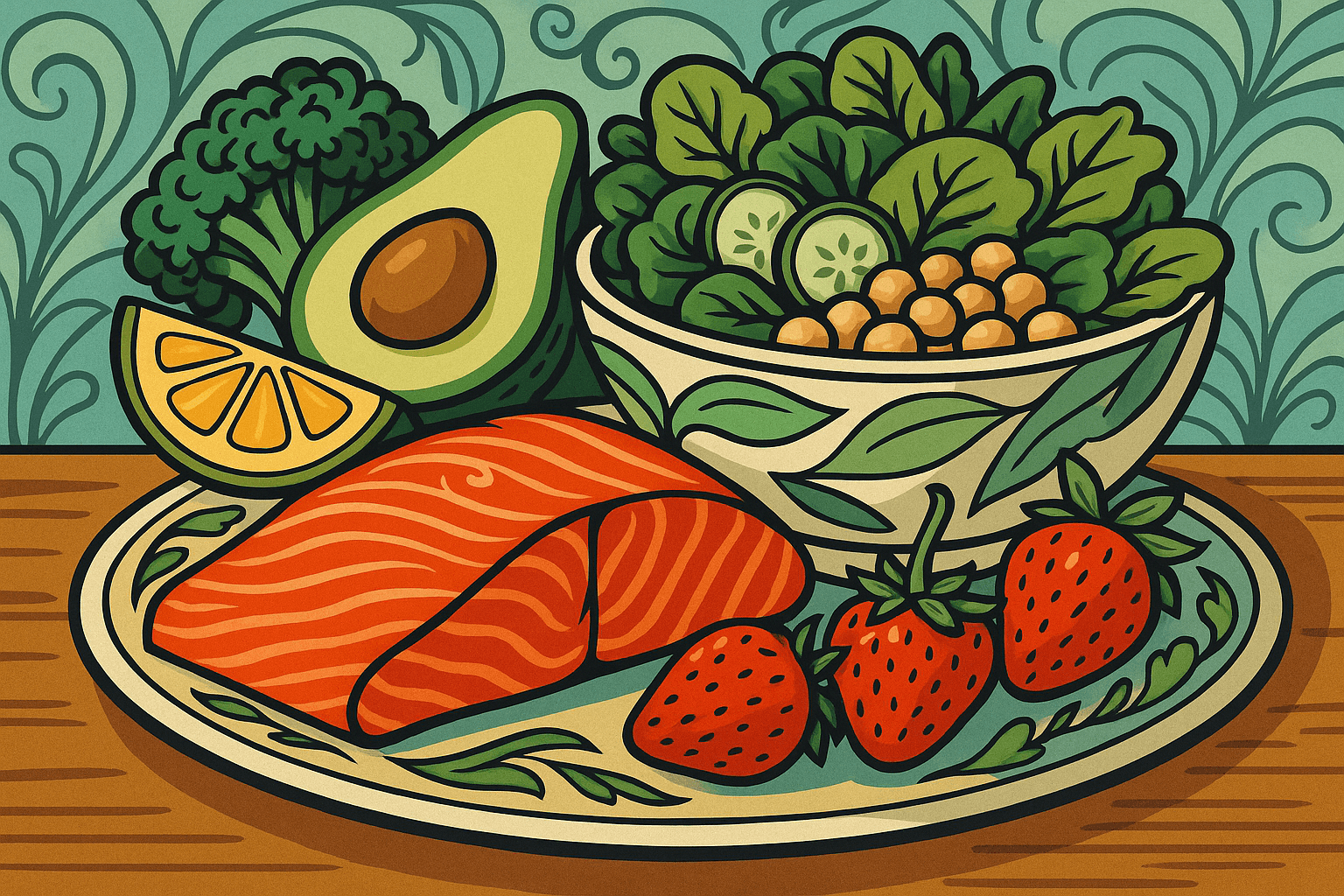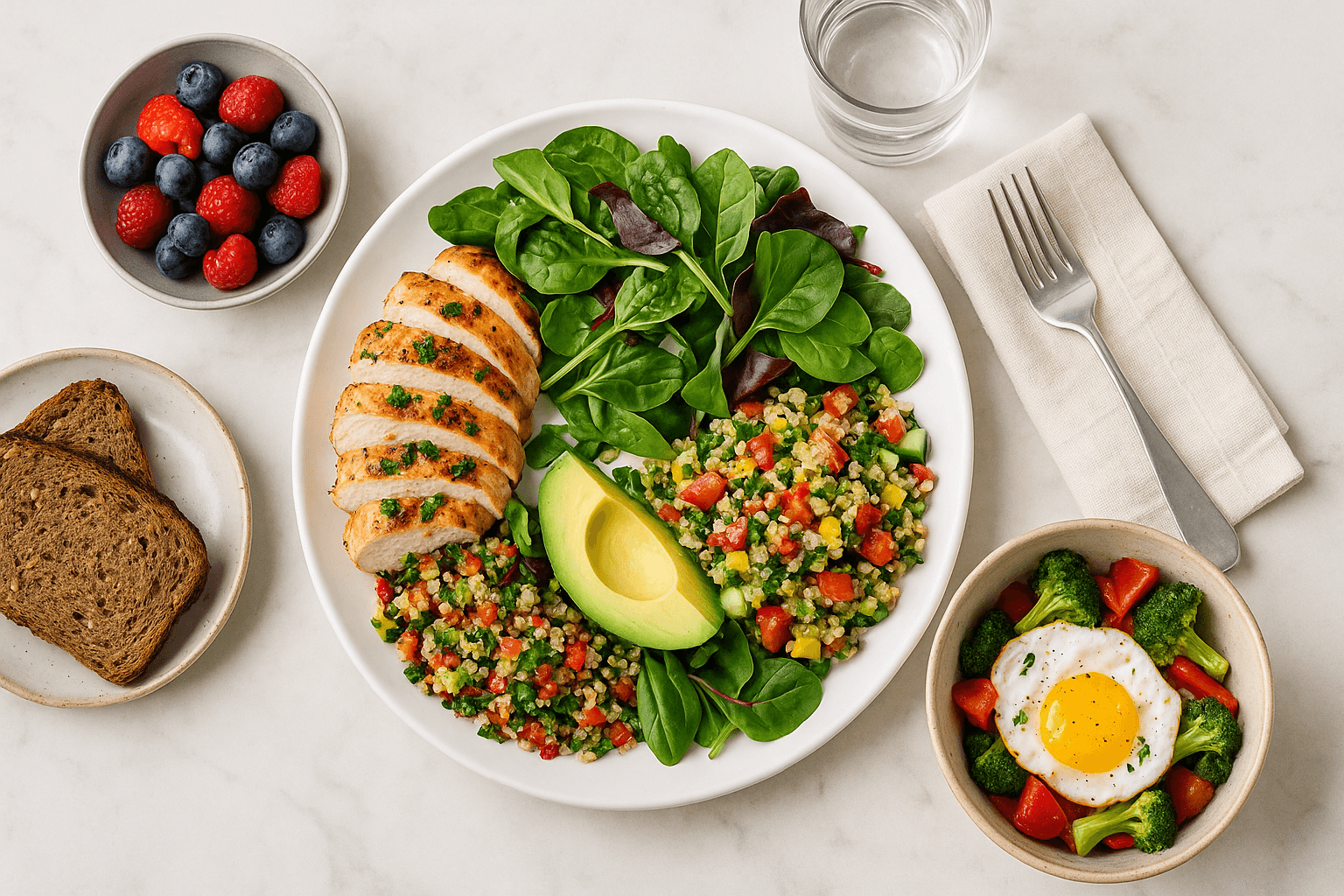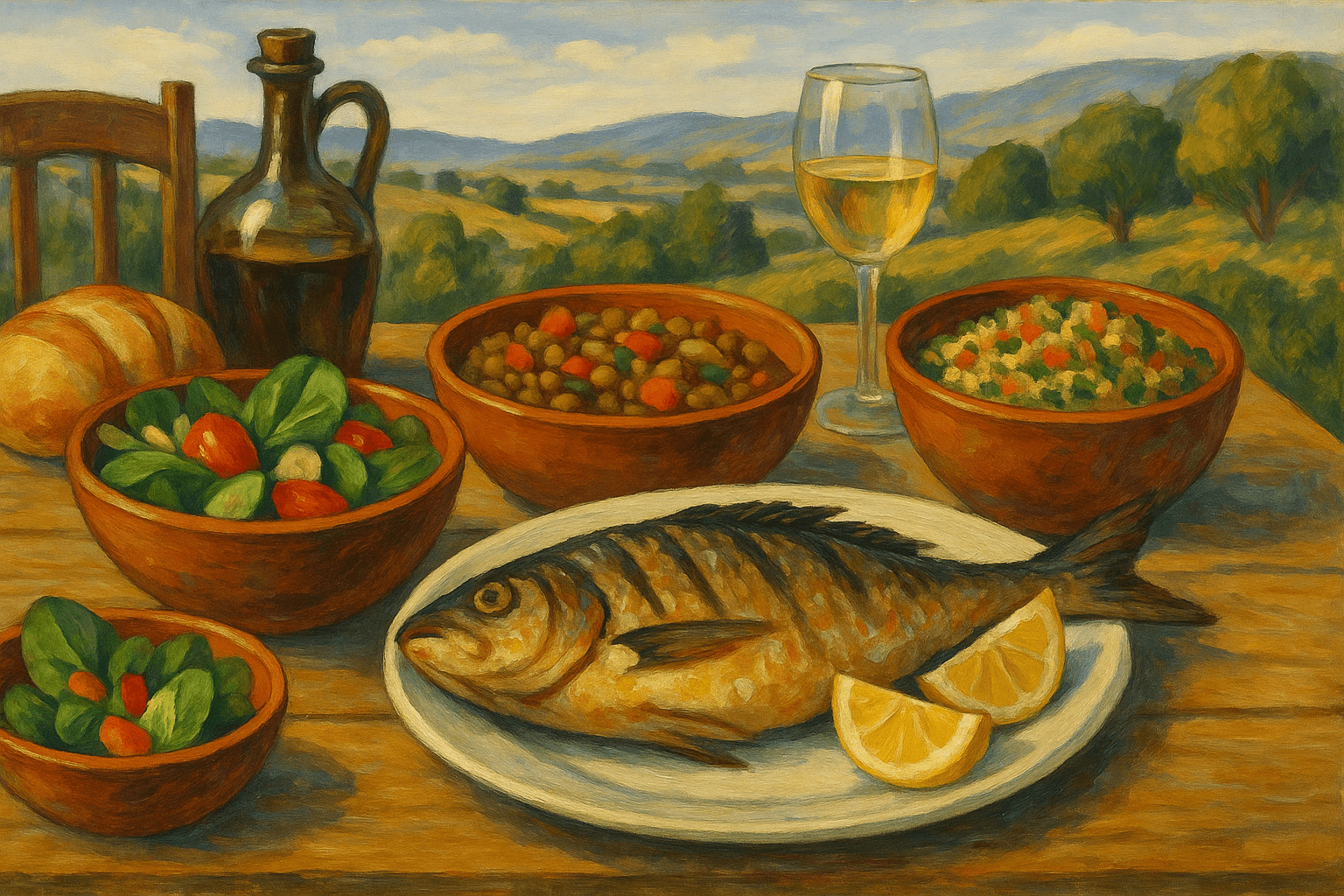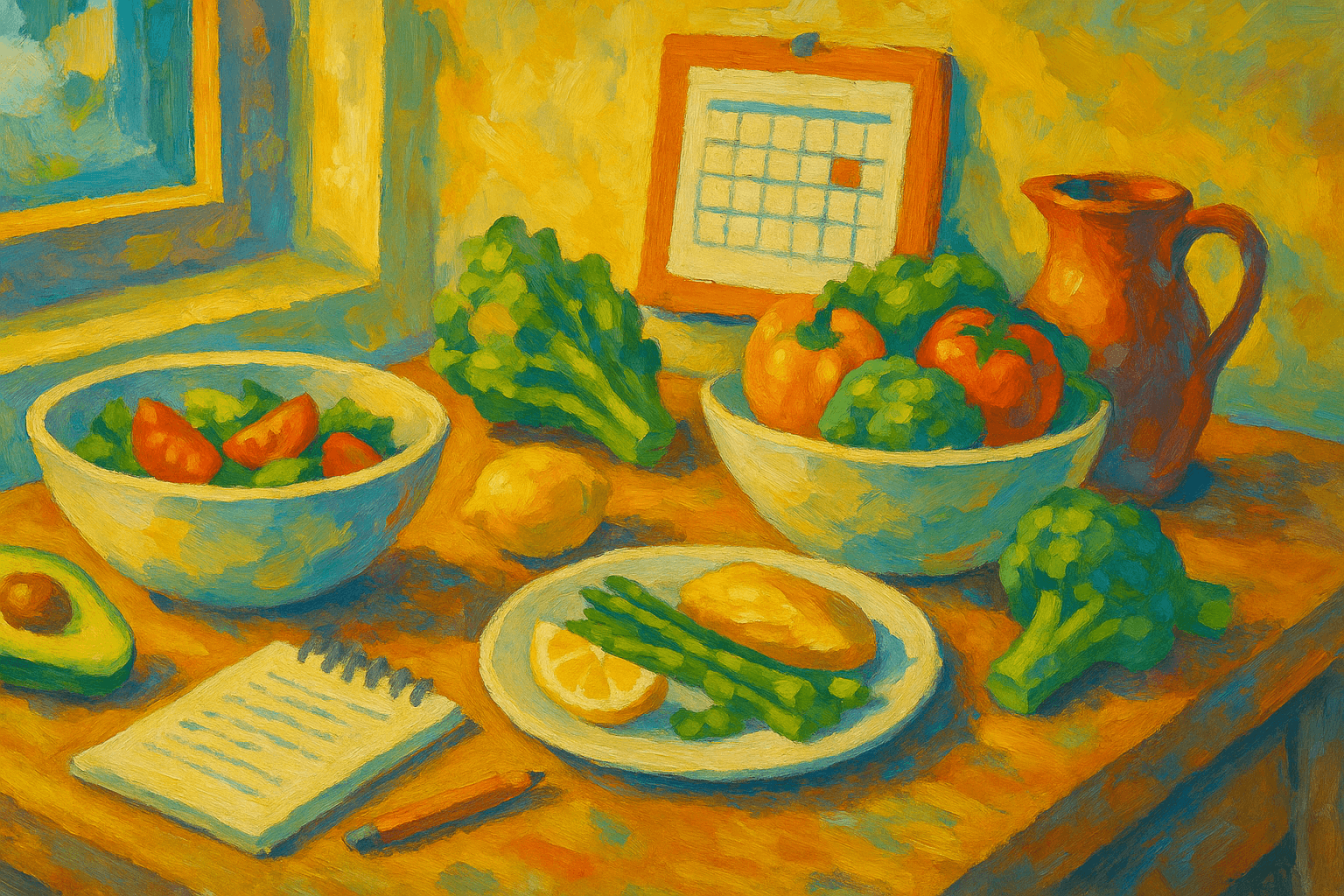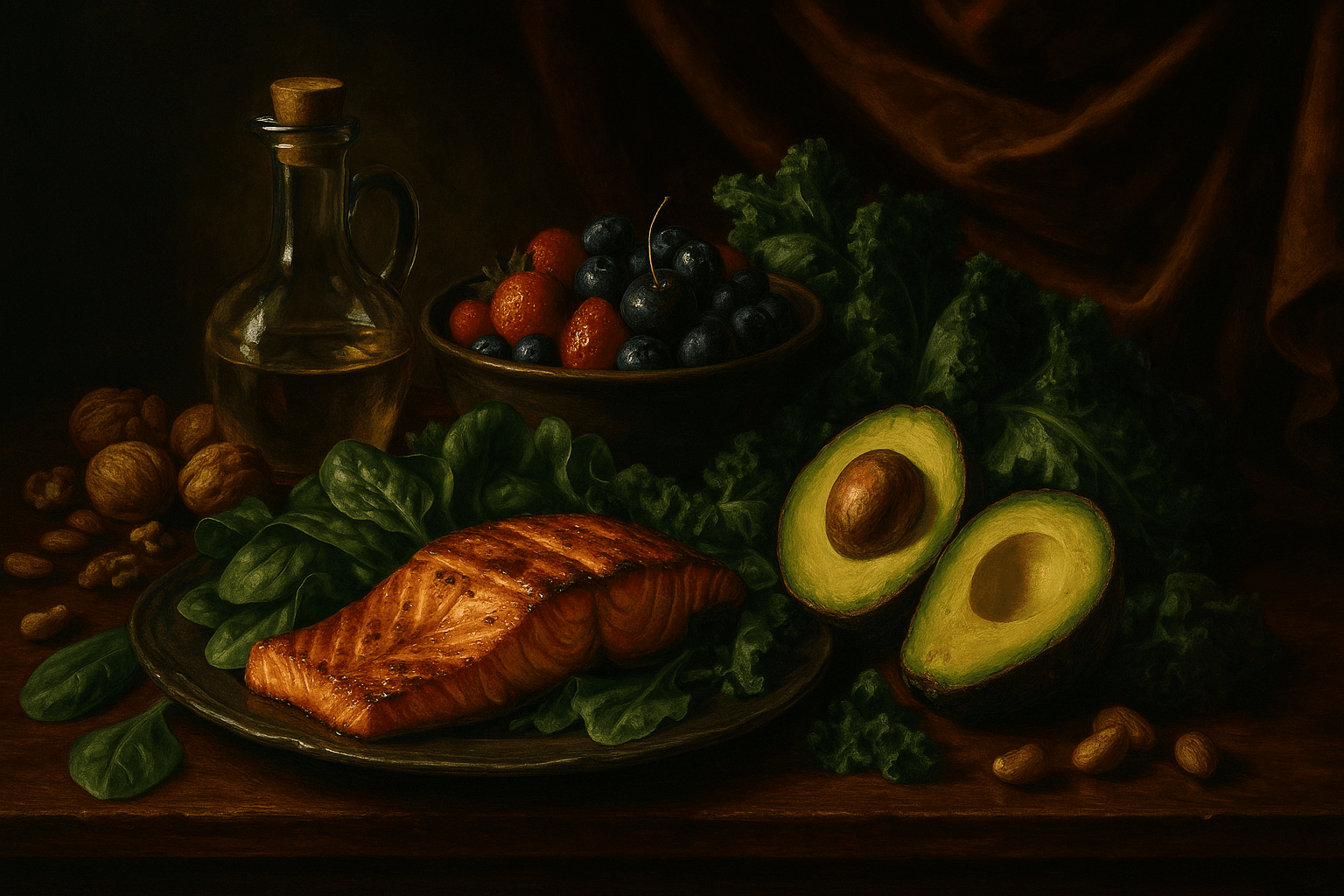High-Protein Meal Plans: Your Blueprint for Energy, Appetite Control, and Lean Muscle Support
Published on June 12, 2025
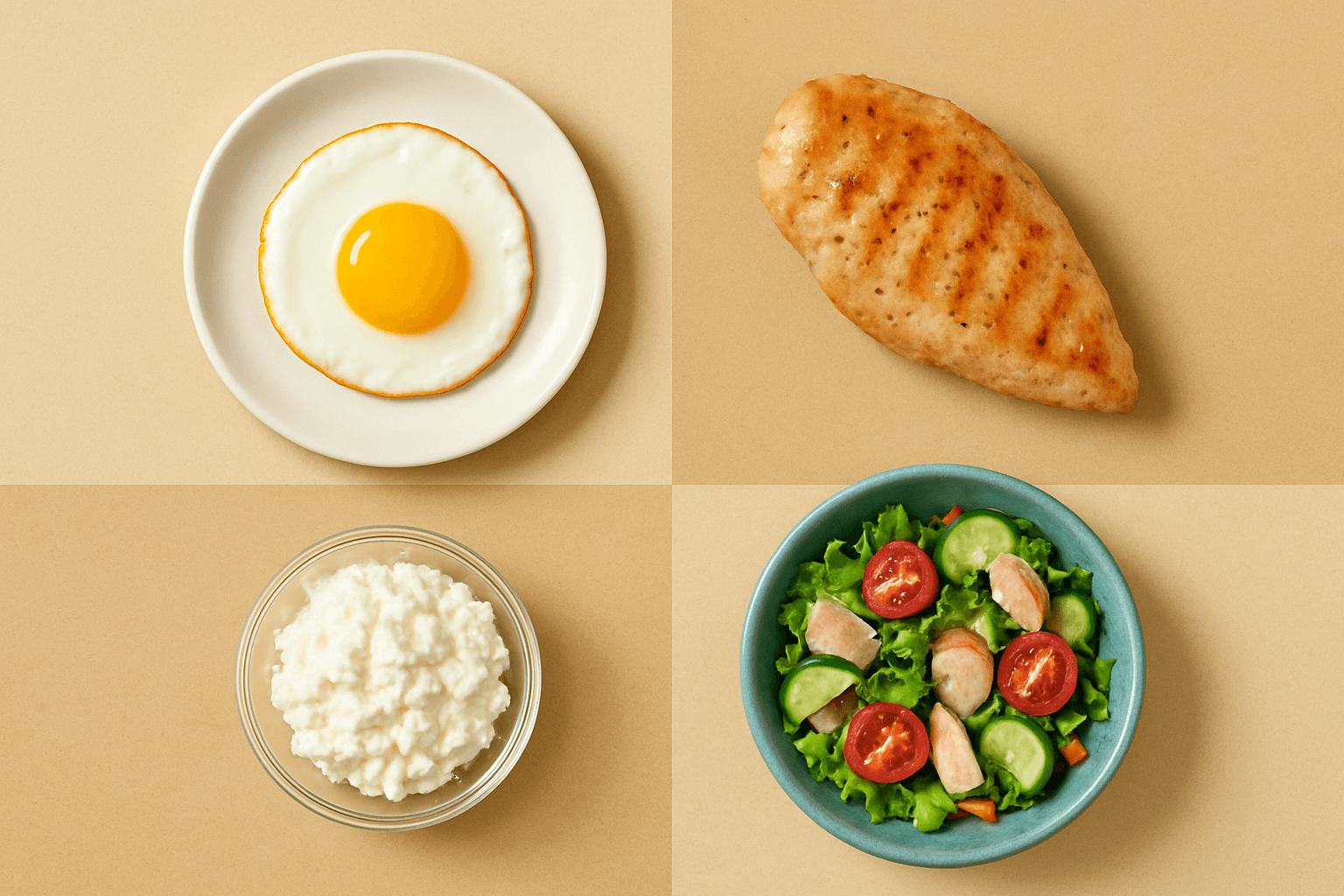
Let’s talk protein — not as a buzzword, but as a daily essential. Whether you're aiming to build lean muscle, manage weight, curb cravings, or simply power through the afternoon slump, a high-protein meal plan can be your ultimate ally.
Why Protein Deserves the Spotlight
Protein supports:
Lean muscle maintenance
Calorie burn through thermogenesis
Appetite and craving control
Workout and injury recovery
Immune and hormone health
Hair, skin, and nail strength
Blood sugar stability
Bone health
Unlike fat or carbs, protein isn’t stored — you need a fresh supply daily.
How Much Protein Do You Need?
RDA: 0.8g/kg — but optimal ranges are higher:
General active adults: 1.2–2.0g/kg
Example: 70kg (155 lbs) → 90–130g daily
Older adults: higher to prevent muscle loss
Athletes: 1.6–2.2g/kg
For weight loss: aim higher for satiety
Use a food tracking app to assess and adjust intake.
Top Protein Sources
Animal-Based:
Chicken breast
Eggs & egg whites
Greek yogurt
Cottage cheese
Tuna, salmon, sardines
Lean beef or pork
Whey or casein protein powders
Plant-Based:
Lentils, beans
Tofu, tempeh
Quinoa, buckwheat
Chia, hemp, flax seeds
Pea & soy protein powders
Nutritional yeast
Pro tip: Mix plant-based proteins (e.g., rice + beans) to get all essential amino acids.
Daily Protein Strategy
Pair protein with fiber or whole grains for slow digestion and steady energy. Drink 2–3 liters of water daily to support metabolism.
Sample High-Protein Omnivore Meal Plan
Day 1
Breakfast: Scrambled eggs, spinach, feta, whole grain toast
Lunch: Grilled chicken salad with quinoa, tahini
Snack: Greek yogurt + walnuts
Dinner: Baked salmon + roasted Brussels sprouts + lentils
Day 2
Breakfast: Whey smoothie with banana and chia
Lunch: Turkey & avocado sandwich
Snack: Cottage cheese + pineapple
Dinner: Tofu stir-fry + brown rice + edamame
Day 3
Breakfast: Overnight oats + protein powder + berries
Lunch: Tuna & chickpea bowl with arugula
Snack: Boiled eggs + baby carrots
Dinner: Grilled shrimp + quinoa tabbouleh + yogurt sauce
Day 4
Breakfast: Cottage cheese pancakes + almond butter + banana
Lunch: Chicken lentil stew + whole grain bread
Snack: Low-sugar protein bar
Dinner: Baked chicken thighs + sweet potato + broccoli
Day 5
Breakfast: Avocado toast + egg + hemp seeds
Lunch: Greek chicken wrap + hummus
Snack: Edamame + almonds
Dinner: Lentil Bolognese pasta + salad
Day 6
Breakfast: Tofu scramble + peppers + nutritional yeast
Lunch: Quinoa salmon salad + tomato + cucumber
Snack: Plant protein smoothie + peanut butter
Dinner: Turkey & black bean chili
Day 7
Breakfast: Chia pudding with soy milk + berries
Lunch: Grilled steak + bulgur + zucchini
Snack: Kefir + ground flaxseed
Dinner: Baked cod + lemon + green beans + barley
Smart Prep Tips
Cook grains in bulk (quinoa, rice)
Roast a tray of veggies
Boil 6–8 eggs for the week
Make a bean salad or baked salmon in advance
Grocery List for High-Protein Living
Proteins:
Eggs, Greek yogurt, cottage cheese
Chicken, turkey, fish, lean beef
Lentils, chickpeas, black beans
Tofu, tempeh, edamame
Whey, pea, or soy protein powder
Grains & Legumes:
Quinoa, oats, brown rice, whole-grain bread
Buckwheat, bulgur, barley
Snacks & Boosters:
Nuts (almonds, walnuts, cashews)
Seeds (chia, hemp, flax)
Nut butters, hummus
Veg & Fruit:
Spinach, kale, broccoli, tomatoes
Berries, bananas, apples
Other:
Olive oil, vinegar, nutritional yeast
Unsweetened soy or almond milk
Budget tip:
Buy canned legumes in bulk
Use frozen fish
Purchase family-size dairy or meat to portion yourself
Protein Power Tips
Check nutrition labels — high-protein doesn’t mean low sugar
Batch-cook proteins for the week
Stay hydrated to ease kidney load
Combine animal and plant proteins
Track how you feel and adjust
Stay consistent — habits > perfection
Pro tip: Keep visible, high-protein snacks on hand to prevent impulsive choices.
Final Thoughts
You don’t need a total diet overhaul. Start with one high-protein meal a day, then build from there. You’ll see the results — more energy, fewer crashes, better performance, and maybe a leaner body.
Protein isn’t just fuel — it’s your foundation. Make it delicious. Make it personalized. Make it work for you.



